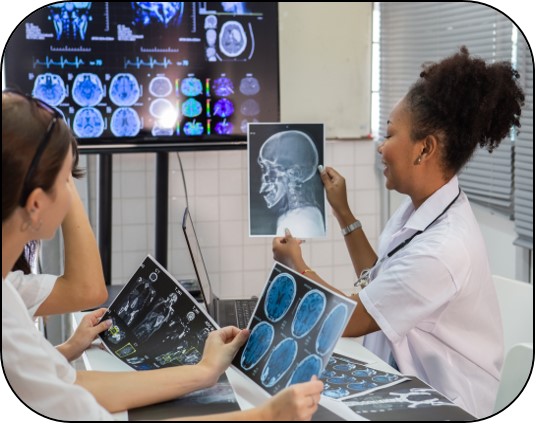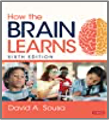A Bit of BRAIN History
Research & Discoveries
Uncovering the mysteries of the human body has been a challenge for scientists throughout
history. Over time numerous ideas about the workings of the body and its relationship to the
brain have been studied, changed, expanded or even eliminated. Current discoveries about the
brain are transforming
the field of neuroscience all over the world.
In the past the unavailability of present-day technologies meant that scientist were limited to using only a non-living body, a corpse. They acquired these cadavers through body donation programs or by obtaining unclaimed bodies. Many scientific laboratories also used small animals when doing extensive brain research.
Throughout history numerous theories about the brain were considered to be true. Here are a couple of interesting beliefs that did not hold up over time---.
Aristotle from 4th century BC had a theory that the brain was used to help cool the heart. Furthermore, he believed the heart was the central location for intelligence and NOT the brain.
Much later, in the late 1700’s another theory emerged, by Franz Joseph Gall. called phrenology. He believed that the exterior bumps on one’s skull unlocked the door to ones’ personality and character. This idea of “skull readings” was eventually abandoned.
What about the successes, near successes and continual misses (failures)?? Sir Winston Churchill said, “Success is the ability to go from one failure to another with no loss of enthusiasm.” These scientist-pioneers from all over the world knew the importance of their quest–understanding the power of the brain. Their contributions through the decades have laid the foundation for today’s breakthroughs.

POW! An explosion takes off in the 1960’s felt all around the world –TECHNOLOGY! This modern development allowed scientists to start to use living bodies when analyzing the brain’s activity. Below is a partial list of imaging and mapping tools that have been developed and designed to assist with the understanding of how the brain functions, learns and its structure.
1970’s First MEG (Magnetoencephalography) a noninvasive imaging technique that records and evaluates active magnetic functioning in the brain using detectors placed on one’s head
1971 First commercial CT Scan —(computed tomography) uses X-rays measurements to produce images of the brain to locate injuries and diseases
1977 First whole-body PET (Positron Emission Tomography) imaging scanner that uses radioactive tracer-liquid to determine how the brain functions.
1977 First MRI (Magnetic Resonance Imaging) uses magnetism, radio waves and a computer to view the head, may discover tumors or fluid and causes of other illnesses
1990”s First fMRI (functional Magnetic Resonance Imaging) looks at the oxygen activity in the brain. It is a noninvasive way to gain information about the thinking brain-neurons First fMRS (functional magnetic resonance spectroscopy) provides chemical information on the activity of the brain as the subject is thinking. It is a noninvasive way to study the brain through imaging.
The EEG test (which was invented in 1924) assists with gathering data on the electrical activity of brain using electrodes. Currently a brain cap with sensors can be placed on the scalp These tests are helpful in diagnosing seizures and other brain problems.
The brain explorers branched out into other frontiers, developing a field of sub-studies under neuroscience, here are a few: behavioral neuroscience, clinical neuroscience, cognitive neuroscience, developmental neuroscience, and educational neuroscience.
In the twenty-first century neuroscience research studies and discoveries are appearing at a
rapid pace throughout the world. The new BCI (brain-computer interface) developments are
amazing! These are just a few examples:
+neurograins are tiny
computer microchips, the size of a salt grains. They are wireless pieces placed on a human
head used to track and monitor brain activity.
+robotic – bionic body
parts provide functionality to a person who has a non-working body part

Resources & References

A Short History of Brain Research – 1st Century to 1872, http://www.mybrain.co.uk/public/learn_history1.php
A (Very) Brief History of Neuroscience, BrainWorld, https://brainworldmagazine.com/a-very-brief-history-of-neuroscience/

Educational Neuroscience The Basics, Cathy Rogers & Michel S. C. Thomas, Routledge Taylor & Francis Group, Introduction section-Why Do We Need Educational Neuroscience, (2023)

How do Scientists Study the Brain?, Elizabeth A. Weaver II & Hilary H. Doyle, Dana Foundation, https://dana.org/article/how-do-scientists-study-the-brain/ , (2019)
How the BRAIN LEARNS, David A Sousa, Corwin Press, Inc., Introduction section, (2022)
Milestones in Neuroscience Research, Amy Hunter, https://faculty.washington.edu/chudler/hist.html , (2017)
Researchers take step toward next-generation brain computer interface system, News from Brown, Brown University, https://www.brown.edu/news/2021-08-12/neurograins , (2021)
THE BIONIC BODY:BREAKTHROUGH TRANSPLANTATION DEVICES, Assistive Technology Blog, https://assistivetechnologyblog.com/2017/10/bionic-body.html , (2017)
Early Literacy Learning
